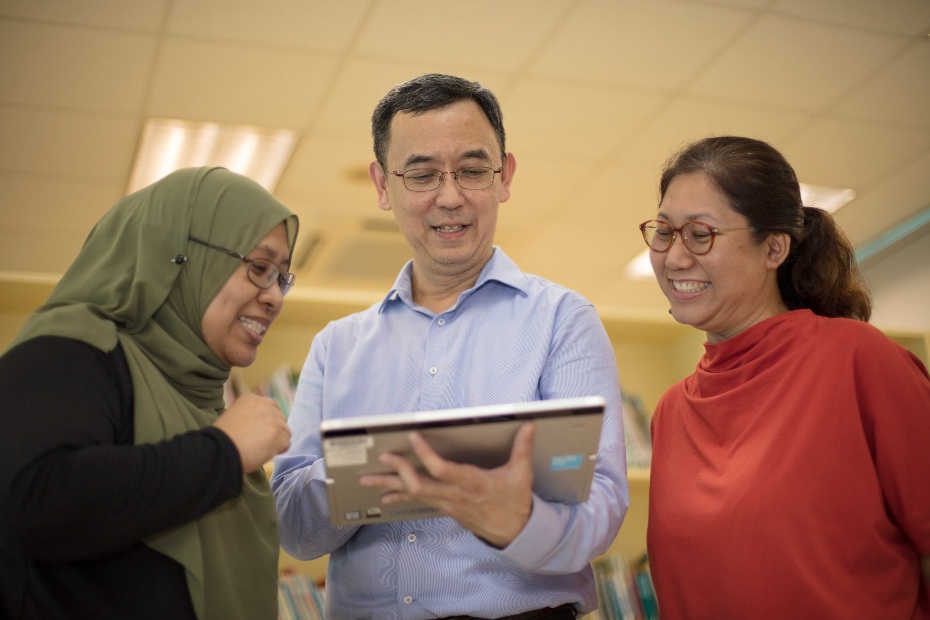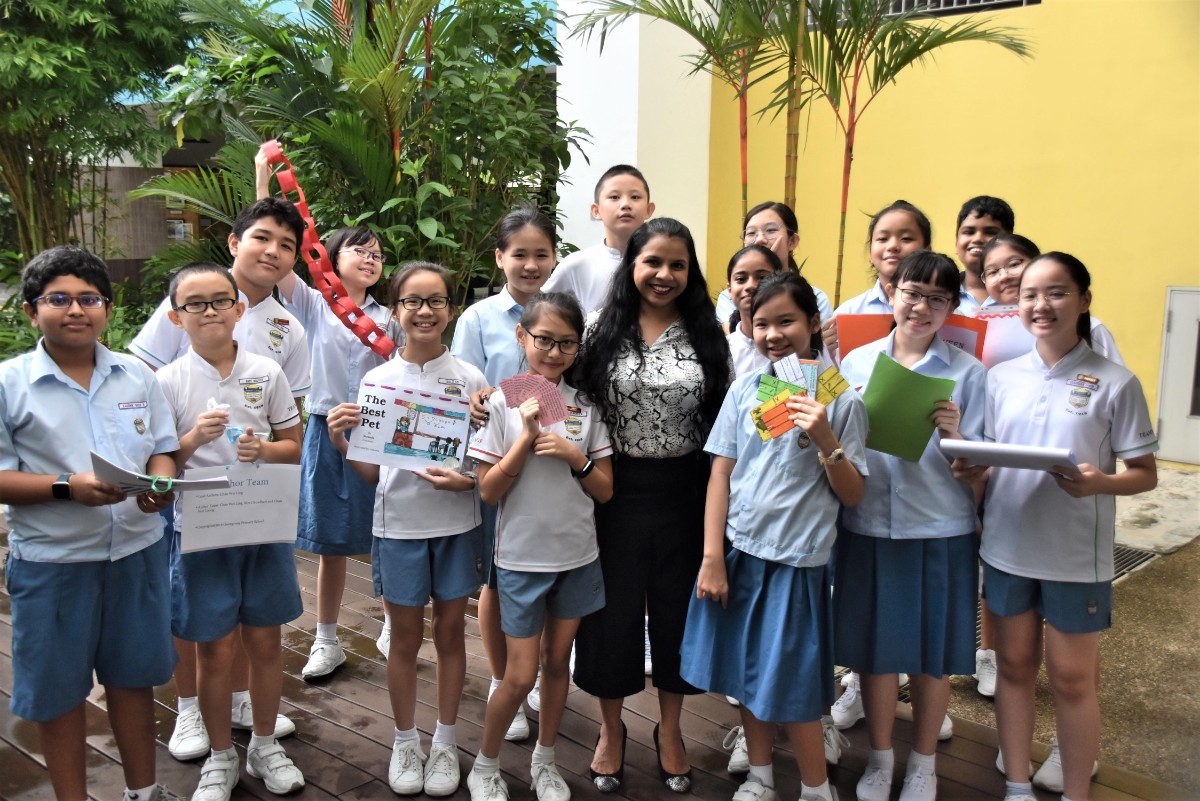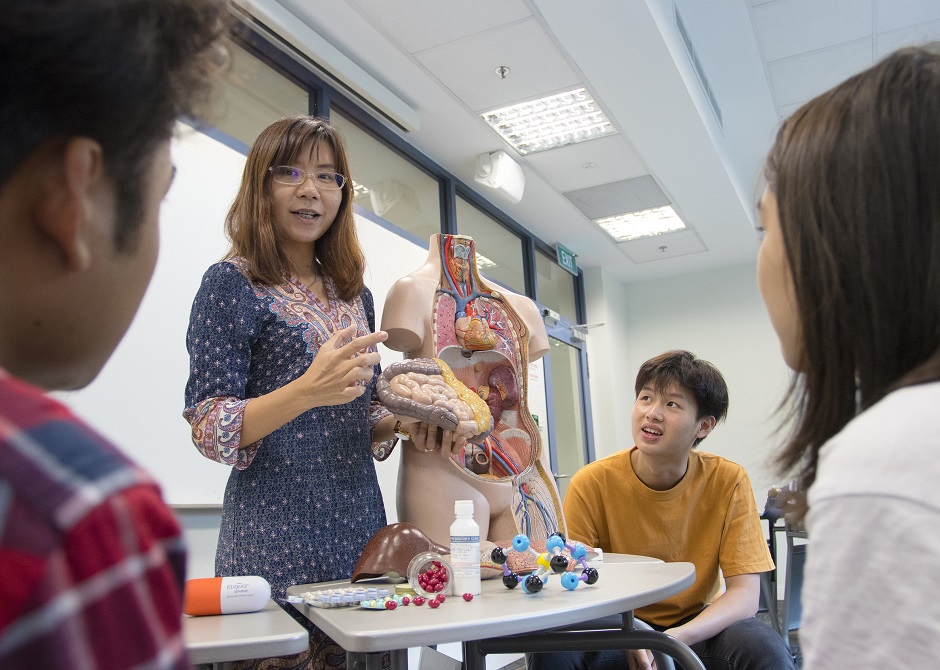Mr Nasrun Bin Mizzy, Teck Whye Primary School, President’s Award for Teachers 2022 Recipient
“Despite all the challenges they face, challenges that would buckle even us as adults, these kids put up a brave front to show up in school, day after day. They somehow find the strength to come to school to learn in spite of what they go through at home. And if they have the resilience to keep going, we will do all we can as a school to support them.”
Of all the inspirational figures in the world, it is the students from challenging backgrounds who motivate Nasrun Bin Mizzy the most.
For those who come from broken homes, don’t have money for recess, or never hear a positive word from their families, Nasrun turns up for work every day at Teck Whye Primary School wanting to be a better teacher because of them.
“Despite all the challenges they face – challenges that would buckle even us as adults – these kids still show up in school, day after day,” says Nasrun, the Head of Department for Physical Education (PE) and Co-curricular Activities (CCA) who has been an educator for 25 years. “They somehow defy the odds to come to school to learn, in spite of what they go through at home. And if they have the resilience to keep going, we will do all we can as a school to support them.”
As he shares about how his students overcome financial hardship and personal challenges, Nasrun could have been talking about himself. When he was eight years old, his father passed away and money became an issue for the family. On some days, Nasrun and his three siblings would be studying by candlelight and waking before dawn to help their mother out at a canteen stall. Meals on most days consisted only of rice, black sauce and some ikan bilis.
Young Nasrun found light on the football field and in the encouragement of his teachers, notably one Mr Jumari Sakom, who would later appoint him vice-captain of the school team. His confidence at his CCA spilled over to his studies; he would go on to complete his Masters in Education and become a PE teacher. From there, Nasrun’s belief in the power of education, sports and emotional support on a child was sealed.
Character – a springboard for success
Nasrun laughs easily but takes his educator role seriously. Every second with a child is a precious opportunity to empower, enrich and enable, he says.
.jpg)
By this token, he aims to maximise his students’ PE time at school by infusing values, learning and meaning into every activity.
During a gymnastics module, for example, he has introduced the use of tablets for students to record and review their classmates’ performance. This way, they are honing video skills while learning values such as empathy and kindness when giving feedback. They also act as resource persons for their peers while developing communication and analytical skills.
For lessons on cardiopulmonary resuscitation (CPR), Nasrun checks with the Science department on when lessons on the circulatory system would be held, and holds the CPR lessons in the same week, where possible. “This goes a long way to help the students have a better understanding of both the CPR procedures and how the heart functions,” he says, adding that unlike in the old days, “PE has gone deeper into the affective and cognitive aspects of learning, on top of the psychomotor domain”. This allows students to find meaningful connections across the different subjects in school – a trait that can help them be future-ready citizens.
Nasrun and his team also take pains to explain the reasons behind their programmes and actions to their students.
He cites how when the pandemic struck, they turned recess time into game time under the programme Play@Recess. To gain access to their assigned play areas, students were given autonomy to play, as long as they met safe-management rules on hygiene and responsibility. House points were also awarded to motivate them towards maintaining the collective goal of keeping everyone safe while embarking on activities that they enjoy with their friends.
“They followed our instructions wonderfully, adapting quickly to the ever-changing situation when the group sizes changed from two to five to eight and back to five,” says Nasrun, beaming. It underscores his belief that when students see meaning behind what they do, results will follow.
For all these nurturing gestures, Nasrun is not one to be soft on discipline either. When it comes to sports, for example, he reminds his fellow teachers that they must not “sacrifice discipline for victory or glory”. “I will not hesitate to bench students who do not display positive behaviours that we know they are capable of,” he points out. “If you make poor decisions on your behaviour, you cannot represent your school.” Work on “restorative practice” such as reflection and apology, rather than punishment, usually follows, he says.
Leveraging the power of collaboration
Nasrun believes in the power of collaborative professional learning. The pandemic presented an opportunity for him to energise his peers in the teaching community.
He had a taste of it when he spent three years at MOE’s PE and Sports Teacher Academy (PESTA), where he was involved in the development of PE teachers through workshops and in schools. He continued this spirit of collaborative professional learning when he was posted to his current school.
During the pandemic, Nasrun believes that the learning of PE must be maintained. Together with a group of like-minded PE HODs, he took the initiative to share with the community the teaching resources that he was developing to improve the PE experience for his students as they were stuck at home during the Circuit Breaker period. Among the resources were ideas for live Zoom lessons, complete with a series of videos that taught students how to create modified PE equipment from common objects like paper for shuttlecocks, socks to make balls, and umbrellas for floorball practice.
Nasrun then created a Google site to upload these and other materials and links from other PE teachers both locally and globally. In these past two years, “my greatest contribution is rallying and enabling a community of PE teachers to support student learning during a period of national crisis”, he says. Today, the website, titled PESG, still sees regular contributions and downloads, thus living up to its mission “For Teachers, By Teachers, With Teachers”. One of the site’s highlights is a comic strip titled PE Chronicles, capturing nuggets of humour around school life that PE teachers can relate to – created by Nasrun!
What gives him the drive to step forward with this and other initiatives? “I believe in leading by example and initiating change through role modelling and having thick skin,” he says.
Saying with a chuckle: “What this means is if there’s a new teaching strategy that I want to try out, I’ll be the one to do it first for my colleagues to critique. After I take in all the feedback, then we as a department will do it together – this is where learning together comes in.” Then, they “have thick skin together” by sharing their newly found knowledge with others in the fraternity. That’s where, he says, the power of collaborative learning can propel the learning trajectory for his teachers.
.jpg)
It’s the same reason he implemented an “open-door policy” in his department, where any teacher can ask to sit in on another teacher’s lesson. “In this way, we are always open to trying different pedagogies, ICT, or assessment tools together, and we all have a chance to affirm and acknowledge one another. In this way, our social-emotional needs are met, and not solely the pedagogical.”
His attitude towards peer enrichment is no different from his approach with his students – to create equal opportunities for all. “No matter who my students are, I will focus on the person rather than the outcome, the process rather than the product.”



.jpg)


